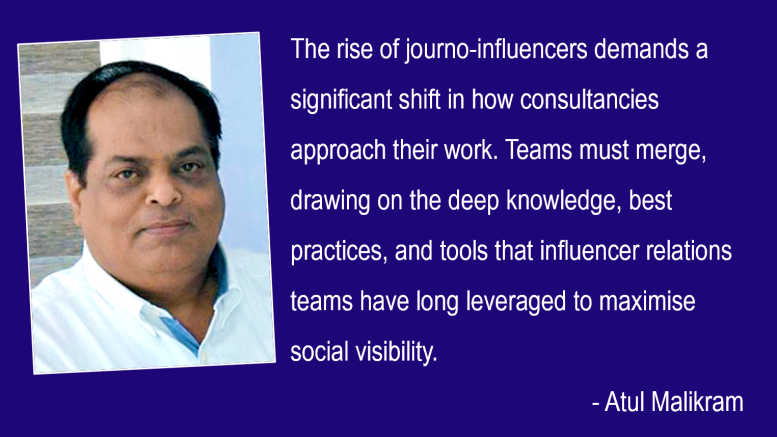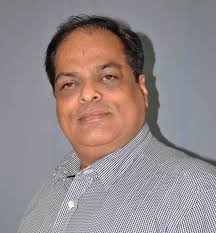Imagine scrolling through your social media feed and stumbling upon a video by a well-known journalist. But this isn’t your typical news segment. Instead, it’s a deep dive into the intricacies of current events, delivered with the same trusted voice but through a more personal, engaging lens. They share thoughtful analyses on Twitter and host live discussions on YouTube, attracting a dedicated following.
Welcome to the era of the journo-influencer, where journalists are transforming their roles and reshaping the media landscape.
The Emergence of Journo-Influencers
In recent years, the media landscape has undergone a significant transformation with the emergence of “journo-influencers”—journalists who leverage their experience, expertise, and trusted voice to create compelling content across social media platforms. Unlike traditional influencers, journo-influencers bring an editorial feel to their content, focusing more on education and exploration rather than mere entertainment and emulation. This shift is reshaping media relations and the way consultancies operate, pushing them to adapt to the evolving dynamics of the industry.
The Blurring Lines of Media and Social Media
The term “influencer” has always been fluid, but the past year has seen a distinct rise in influential voices on social media who prioritise informative and exploratory content. Journalists like:
- Ravish Kumar
- Barkha Dutt
- Rahul Kanwal
- Faye Dsouza
- Deepak Sharma
- Ajit Anjum
These journalists exemplify this trend. With their strong journalistic backgrounds and active social media presence, they influence a vast majority of the population across various platforms. Their ability to blend traditional journalism with modern digital storytelling sets them apart in the crowded influencer space.
As the lines between traditional media, social media, editorial content, and visual storytelling continue to blur, so too must the disciplines, skill sets, relationships, and ways of working within a consultancy structure. Trusted media relations tactics and influencer relations teams can no longer operate independently or even side-by-side. Instead, they need to morph into a blended approach that recognises and embraces the wide spectrum of creators who can no longer be neatly categorised as either journalists or influencers.
The Practical Implications for Consultancies
The rise of journo-influencers demands a significant shift in how consultancies approach their work. Teams must merge, drawing on the deep knowledge, best practices, and tools that influencer relations teams have long leveraged to maximise social visibility. At the same time, they must incorporate the storytelling, messaging, and pitching skills honed by traditional media relations teams over years of working with journalists.
This transformation requires consultancy leaders to rethink the value employees bring to the team and the skills they prize. Many professionals have built careers as media strategists or influencer relations specialists, but the underlying skills—such as:
- Relationship building
- Storytelling
- Team leadership
- Data mining
These are what truly matter. Forward-thinking consultancies will begin organising teams by talent rather than by platform, fostering collaboration among relationship builders, storytellers, team leaders, data miners, and more.
The Future of Media Relations
The consultancies that will thrive in this new landscape are those that break down barriers and work collectively to tell client stories. By uniting expertise and following the industry convergence, these consultancies will be better positioned to navigate the evolving media environment.
Journo-influencers today are leading the charge, demonstrating how journalistic integrity and expertise can be seamlessly integrated into the digital world. As their influence grows, consultancies must adapt to the changing dynamics, embracing a holistic approach to media relations that leverages the strengths of both traditional and new media practices.
Undoubtedly, the rise of journo-influencers signifies a pivotal shift in the media landscape. Consultancies that recognise this change and adapt their strategies accordingly will not only survive but thrive in the future of media relations. The key lies in valuing and leveraging the diverse talents within their teams, fostering collaboration, and embracing the convergence of media, social media, and digital storytelling.
Conclusion
The era of journo-influencers is here, bringing with it profound changes to the media landscape. Consultancies that adapt by integrating the skills of traditional media relations with the innovative approaches of influencer marketing will lead the way. By valuing talent over platforms and fostering collaboration, these consultancies will thrive in this new media environment, telling compelling stories that resonate in both the digital and traditional realms.
The views and opinions published here belong to the author and do not necessarily reflect the views and opinions of the publisher.



Be the first to comment on "The Rise of Journo-Influencers and the Future of Media Relations"